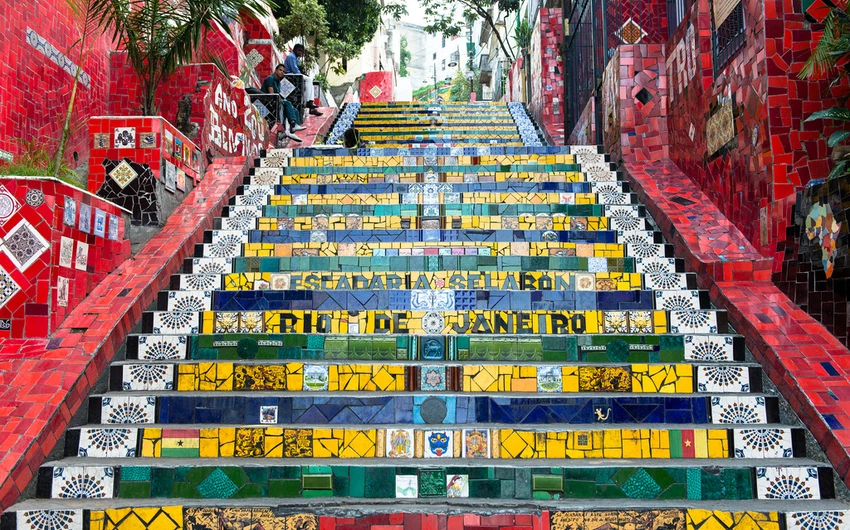Top 10 tourist attractions in Rio de Janeiro
<p style=";text-align:left;direction:ltr">ArabiaWeather.com - Ismail Ghasemi - Rio de Janeiro, the charming city in Brazil, one of the best places to spend the year-end holidays and enjoy the celebrations of entering the new year and the cosmopolitan city that will attract a huge number of tourists in 2016 on the occasion of the Olympic Games; It includes a large number of tourist places, but there are 10 distinctive landmarks that you must visit upon your arrival in Rio de Janeiro, so what are they?</p><p style=";text-align:left;direction:ltr"></p><p style=";text-align:left;direction:ltr"> <strong>Statue of Christ the Redeemer</strong></p><p style=";text-align:left;direction:ltr"> The number one landmark among the tourist attractions in Rio de Janeiro, without a doubt, is its symbol, which rises at an altitude of 710 meters at the summit of Corcovado, whose construction began in 1922 during the height of the Art Deco movement, and is considered the largest statue of this type in the world.</p><p style=";text-align:left;direction:ltr"></p><p style=";text-align:left;direction:ltr"> <strong>Copacabana Beach</strong></p><p style=";text-align:left;direction:ltr"> It is more active than the neighboring beach, "Ipanema", through the hustle and bustle of football or volleyball, street vendors and kiosks inside the beach, and is known as one of the best places to celebrate the entry of the New Year in the world.</p><p style=";text-align:left;direction:ltr"></p><p style=";text-align:left;direction:ltr"> <strong>Ipanema beach</strong></p><p style=";text-align:left;direction:ltr"> The beach gained its fame after the bossa nova song "Girl from Ipanema" in the 1960s, and it remains one of the most popular spots in Rio today, and is on the list of "Best Beaches in the World" every year.</p><p style=";text-align:left;direction:ltr"></p><p style=";text-align:left;direction:ltr"> <strong>Sugar Mountain</strong></p><p style=";text-align:left;direction:ltr"> It is a monolith of quartz and granite that rises to 400 meters above the mouth of Guanabara Bay. The summit can be reached via a cable car that runs every 20 minutes from the "Babylonia" plateau station to the highest hill, "Morro da Urca".</p><p style=";text-align:left;direction:ltr"></p><p style=";text-align:left;direction:ltr"> <strong>Botanical garden</strong></p><p style=";text-align:left;direction:ltr"> Jardim Botanico is located west of the Lagoa de Janeiro neighborhood, and it includes more than 8,000 species of plants. It was built in the early 18th century and features a number of monuments, fountains, the Japanese garden, and the Museum of the Environment.</p><p style=";text-align:left;direction:ltr"></p><p style=";text-align:left;direction:ltr"> <strong>Santa Teresa district</strong></p><p style=";text-align:left;direction:ltr"> Perched on a hill overlooking the city's port, the neighborhood takes visitors back through the 19th century mansions and farms, and the area was a haven for artists, musicians, and writers in the past.</p><p style=";text-align:left;direction:ltr"></p><p style=";text-align:left;direction:ltr"> <strong>Lapa district</strong></p><p style=";text-align:left;direction:ltr"> Downtown Rio is known as "Centro" and is known for its fun nightlife, local cuisine, and 17th-century architecture.</p><p style=";text-align:left;direction:ltr"></p><p style=";text-align:left;direction:ltr"> <strong>Tijuca National Park</strong></p><p style=";text-align:left;direction:ltr"> One of the largest urban forests in the world, it covers a large area of mostly mountainous landscape. Visitors can climb to the top of Pico da Tijuca for panoramic views of Guanabara Bay and the city below.</p><p style=";text-align:left;direction:ltr"></p><p style=";text-align:left;direction:ltr"> <strong>Maracanã Stadium</strong></p><p style=";text-align:left;direction:ltr"> Football is the most important activity in Brazil, so the Maracanã stadium is one of the city's tourist attractions. It was able to accommodate 200,000 people once when it opened in 1950, and after modifications, it contains 80,000 seats, making it the largest stadium in South America. .</p><p style=";text-align:left;direction:ltr"></p><p style=";text-align:left;direction:ltr"> <strong>Lagoa region</strong></p><p style=";text-align:left;direction:ltr"> Not only is it the most exclusive neighborhood in the affluent Zona Sul, but it is the third most expensive in South America. It is also home to a large lake known as Lagoa Rodrigo de Freitas, which is a favorite place for jogging and cycling. It also has outdoor cafes and restaurants along the beach, with stunning views of the lake and beaches</p><p style=";text-align:left;direction:ltr"></p>
Arabia Weather App
Download the app to receive weather notifications and more..













